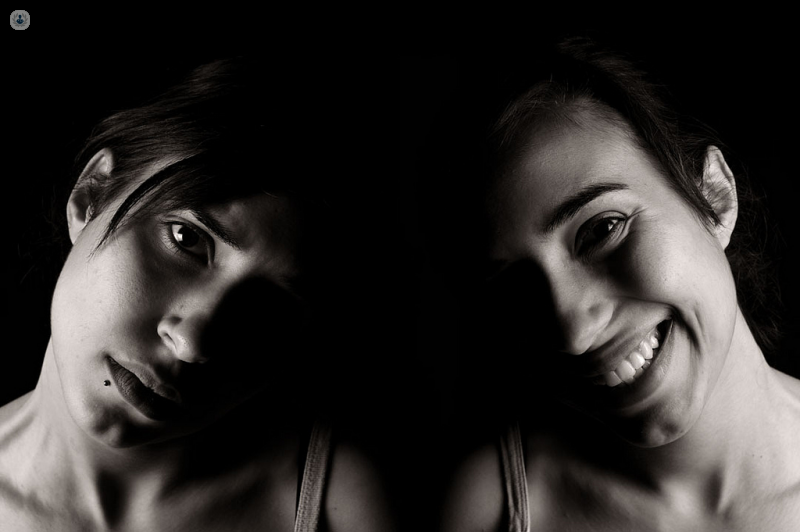

What is bipolar disorder?
Bipolar disorder is a mental health condition, in which the patient experiences both episodes of elation, high energy, or high productivity (mania), and episodes of feeling down or depressed, and, in some cases, episodes with symptoms of both. It used to be known as “manic-depression”, due to this duality. The highs and lows can both last for weeks in extreme cases, and can severely affect the life of the patient as their mood swings from one extreme to the other.

There are four recognised categories of bipolar disorder, each sharing characteristics of both mania and depression, but with varying frequencies, tendencies and intensities of the two.
- Bipolar I means that the patient has suffered at least one major manic episode lasting at least a week. Depressive episodes, or episodes with symptoms of both may also be present.
- Bipolar II is characterised by less severe mania (hypomania), but at least one major depressive episode. For diagnosis, the patient must never have suffered a major manic episode. As hypomania is easily mistaken for normal happiness, rather than a mood swing, it is often misdiagnosed simply as depression.
- Cyclothymia, or cyclothymic disorder is a somewhat less extreme variation, in which the patient has suffered numerous periods of hypomanic symptoms and periods of depressive symptoms over the course of at least 2 years (1 year in children).
- Unspecified bipolar – symptoms of mania or hypomania and depression are present, but do not meet currently accepted criteria for an episode.
Some psychiatrists suggest that bipolar and related conditions are best understood as a spectrum, but this view is disputed.
What are the symptoms of bipolar disorder?
Manic episodes are characterised by:
- Feeling “up” – patient may feel elated or high.
- Having lots of energy
- Periods of increased activity or productivity
- Talking very quickly about lots of things, perhaps changing topic in conversations rapidly
- Feeling like your thoughts are racing
- Taking risks
- Trouble sleeping
- Feeling wired
- Irritability, or feeling agitated
Depressive episodes are characterised by:
- Feelings of sadness, emptiness or hopelessness
- Lack of energy
- Periods of decreased activity or productivity
- Feeling like you can’t enjoy anything
- Feeling emotionally numb or empty
- Trouble concentrating, forgetting things
- Trouble sleeping – sleeping too much or too little
- Feeling tired
- Overeating or undereating
- Suicidal thoughts, or thoughts about death
In certain cases, people with bipolar disorder suffer from psychosis during an episode, including hallucinations or delusions.
What causes bipolar disorder?
The exact mechanism of bipolar disorder is not fully understood, but it is thought that genetics play a big role. Environmental factors, such as childhood trauma or abuse, may also contribute.
What is the treatment?
Treatment for bipolar disorder is centred around controlling the patient’s mood swings. Each case is different, with different patients suffering episodes of varying duration, intensity, and symptoms. Therefore, treatment must be individualised.
Effective treatment plans usually involve a combination of medication, such as mood stabilisers and antidepressants, and talking therapy, such as CBT (cognitive behavioural therapy). Sleep medication or antipsychotics may be prescribed to counter specific symptoms.
